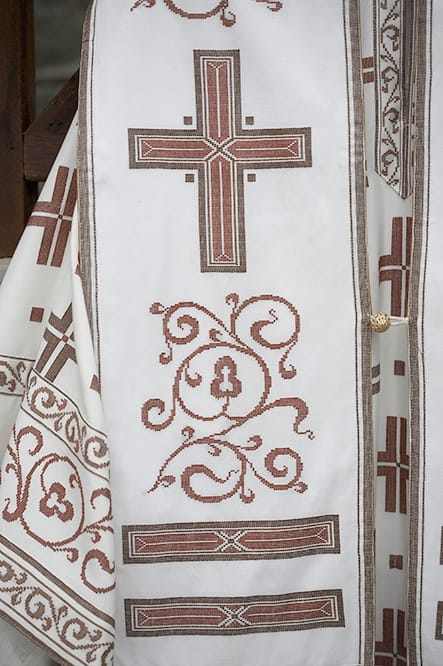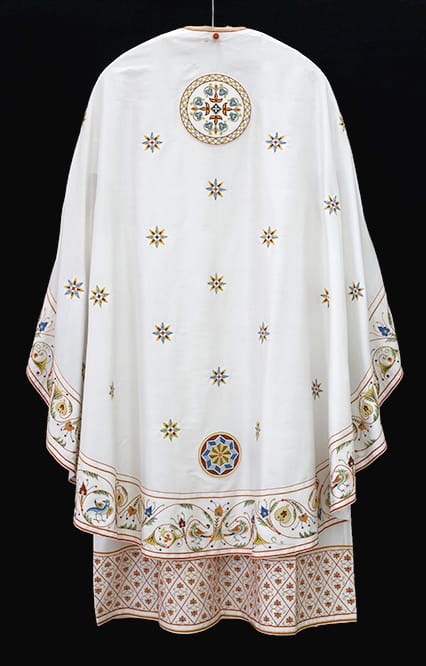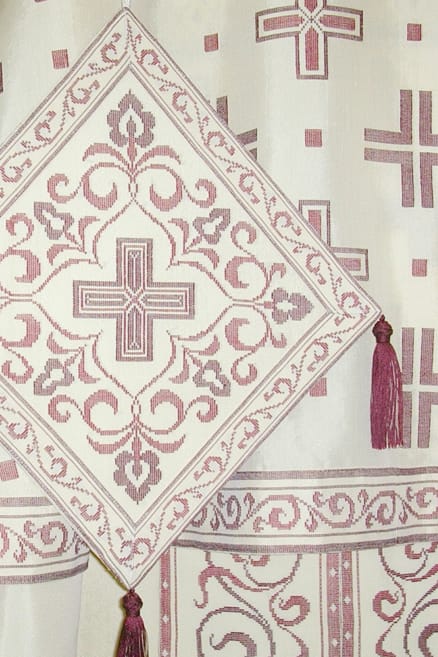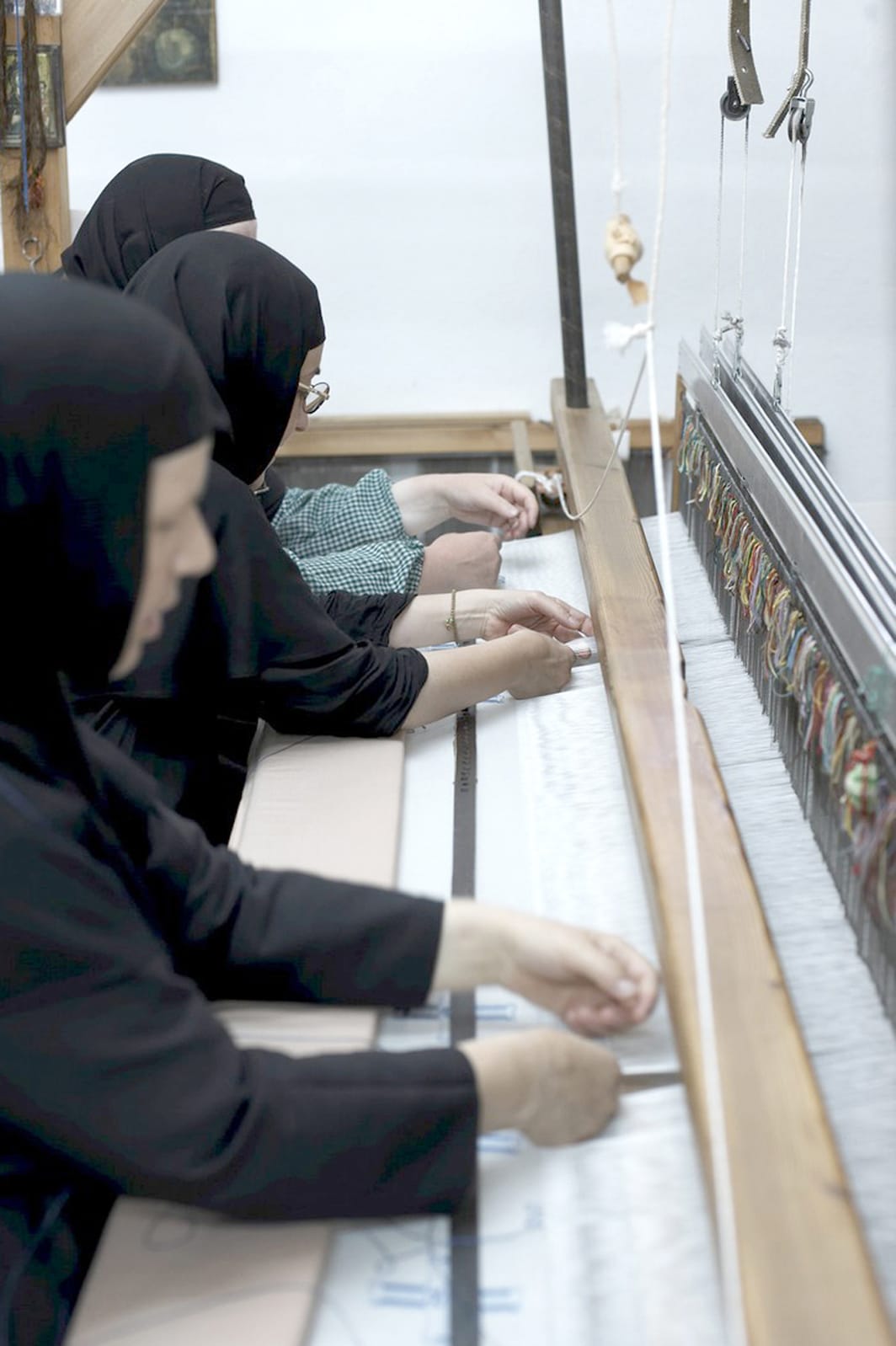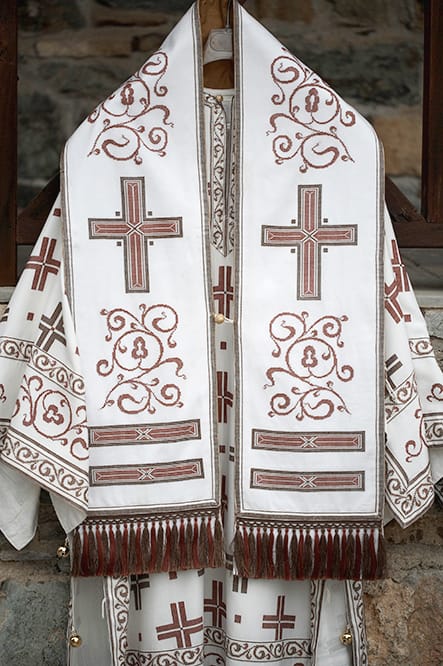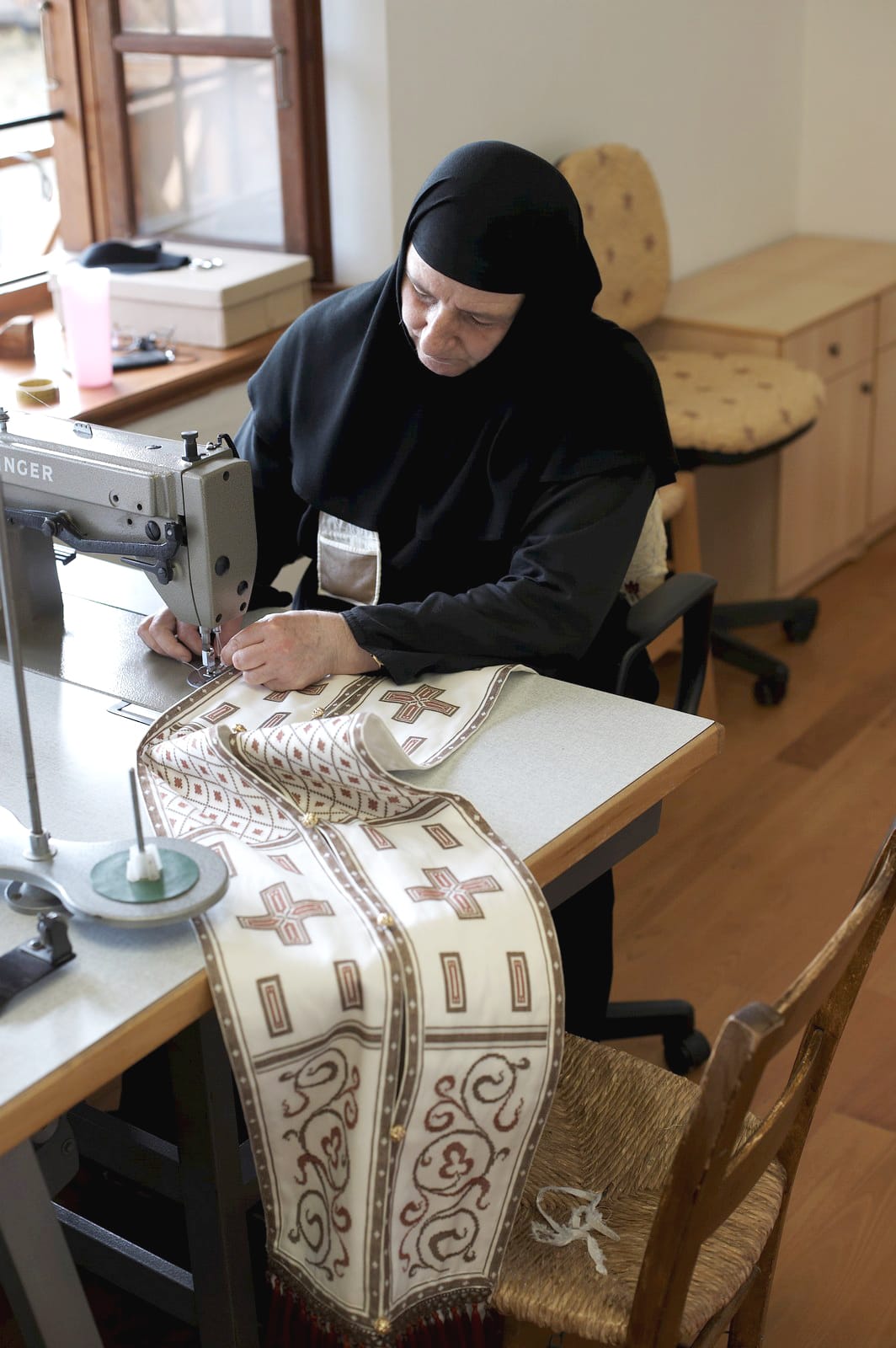Loom Room – Vestments Tailoring Workshop
At the Loom Room, the sisters, observing tradition, use manual wooden looms to weave embroidered ecclesiastical vestments, wonderful polystravria [many-crossed] phelonia, stoles, or curtains bearing folk decorative motifs. Polystavria [many-crossed] phelonia are famous for their crosses woven in the Byzantine tradition, the same as those worn by the Saints painted on the walls and domes of the Katholika of monasteries and convents.
Loom woven stoles are preferred by many priests, since they are both beautiful and light, while easy to wash and long-lasting. The five looms of the convent never stop working to prepare the numerous items ordered.
Vestment Tailoring Workshop
At the Vestment manufacturing workshop, the work performed requires great attention. This is where the work of all other workshops starts and is concluded, i.e., where the cutting and final sewing of vestments takes place. Vestment seamstresses are responsible for taking the right measurements of the priest ordering the vestments, for cutting the textile, which is then forwarded to the drawing room, the needlework room or the loom room. Once the needlework and weaving are finished, the vestments with all their accessories come back to the vestment workshop to be sewn into their completed final form.
